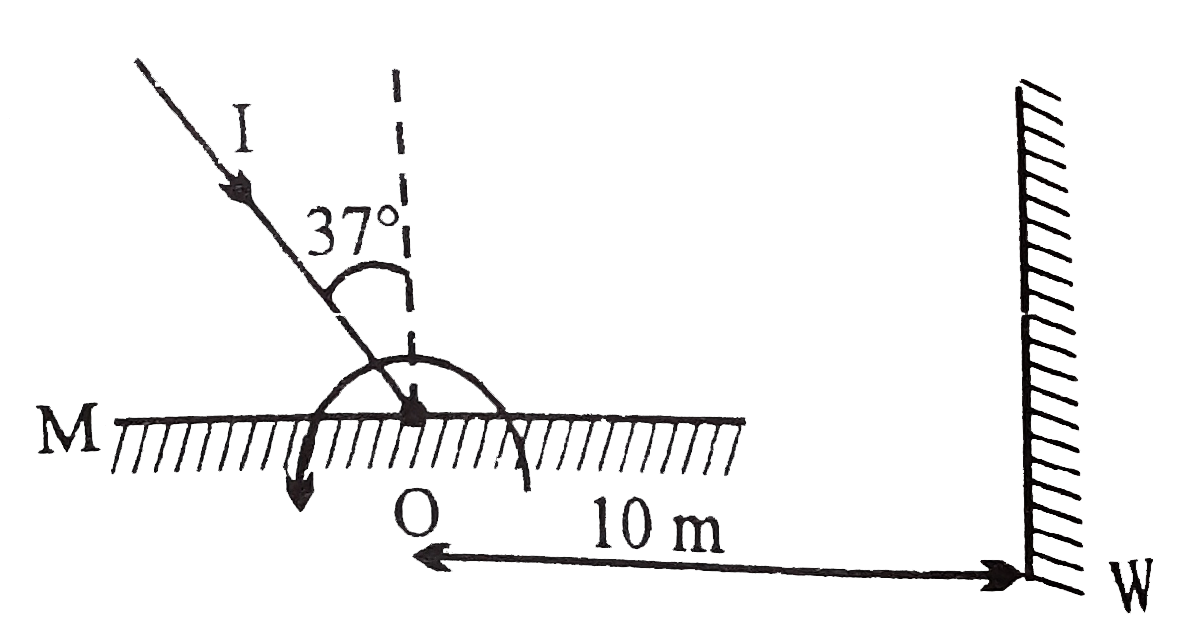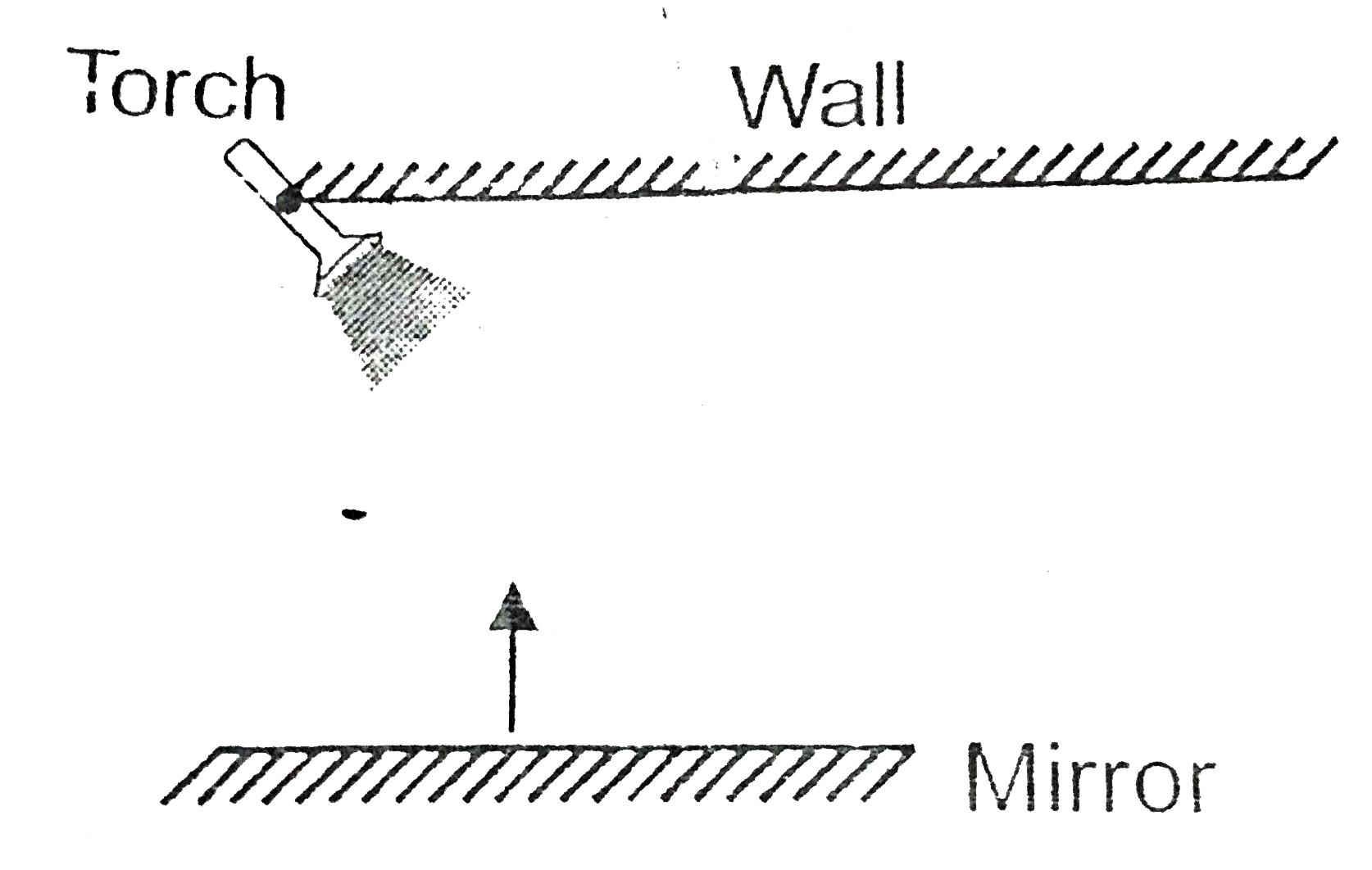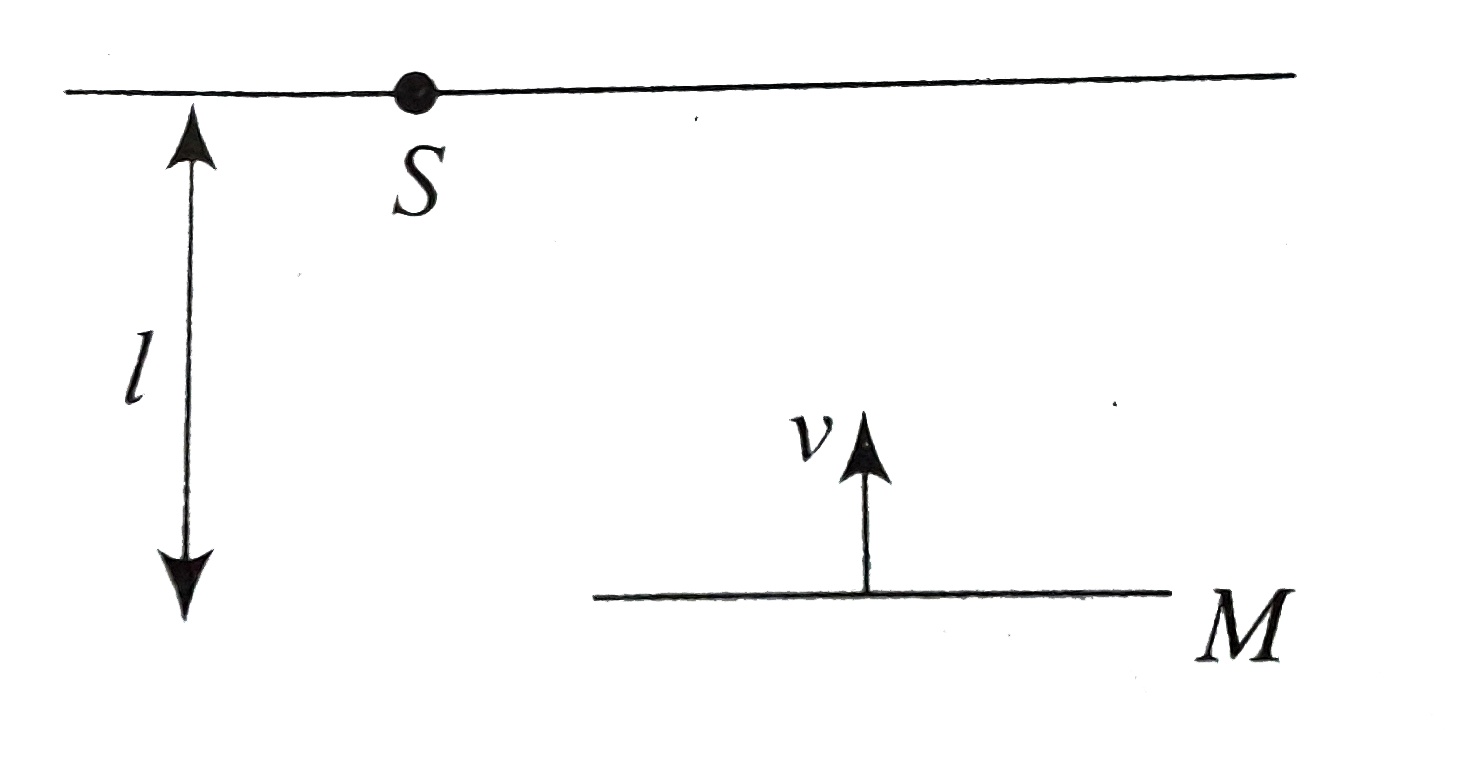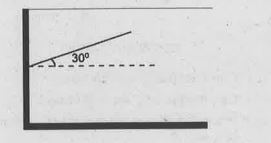Figure shows a top view of a square room. One wall is missing and the wall 33.7° on the right is a mirror. From point P in the center of the open side a laser is pointed at the mirrored wall. At what angle of incidence must the light strike the right-hand wall so that after being reflected the light hits the left corner of the back wall?
Let the length of each side of the room be L. The trick is to find the image of this corner in beyond the mirror. It is simply on the other side one wall-length inside the mirror. The laser must point at this image. The laser beam will run along the hypoteneus of a right triangle with the image of the far wall as the opposite side with length L and the adjacent side is from the laser to the image therefore a length 1/2L+L. The angle we are looking for is obtained by the tangent function: tan θ = L/1.5L = 0.66667 ⇒ θ = 33.690◦
Related Solutions
A flat mirror M is arranged parallel to the wall W at a distance . The light produced by a point source S placed on the wall is reflected by the mirror and produces a point of light on the wall. The mirror is moving with a velocity v towards the wall.
View SolutionThe drawing shows a top view of a square room. One wall is missing and the other three are each mirrors. From point p in the centre of the open side, a laser is fired, with the intent of hitting a small target located at the centre of one wall. Identify vector in whose direction the laser can be fired and score a hit, assuming that the light does not strike any mirror more than once.
View SolutionA light ray is incident on a plane mirror .The mirror is rotated in the direction as shown in the figure by an arrow at frequency ,The light reflected by the mirror is received on the wall at a distance from the axis of rotation .When the angle of incidence becomes find the speed of the spot (a point) on the wall?

View SolutionA light ray I is incident on a plane mirror M .The mirror is rotated in the direction as shown in the figure by an arrow at frequency (9)/(pi) "rev"//"sec" ,The light reflected by the mirror is received on the wall W at a distance 10m from the axis of rotation .When the angle of incidence becomes 37^(@) find the speed of the spot (a point) on the wall?
View SolutionA light ray I is incident on a plane mirror M .The mirror is rotated in the direction as shown in the figure by an arrow at frequency (9)/(pi) "rev"//"sec" ,The light reflected by the mirror is received on the wall W at a distance 10m from the axis of rotation .When the angle of incidence becomes 37^(@) find the speed of the spot (a point) on the wall?
View SolutionA plane mirror M is arranged parallel to a wall W at a distance /from it: The light produced by a point. source S kept on the wall is reflected by the mirror and produces a patch of light on the wall. The mirror moves with velocity v towards the wall. Which of the following statement(s) is/are correct?
View SolutionLight rays from the sun after reflection at a plane mirror pass throgh a hole in a wall. After some time due to the shift in the position of the sun, the angle of incidence of sun light increases by . By what angle, should the mirror be rotated, such that the reflected rays continue to pass through the hole in the wall?
View SolutionA wall reflects light and a mirror also reflects light. What difference is there in the way they reflect light ?
View SolutionA wall reflects light and a mirror also reflects light. What difference is there in the way they reflect light ?
View SolutionA wall reflects light and a mirror also reflects light. What difference is there in the way they reflect light ?
View SolutionFigure shows a torch sending a parallel beam of light fixed on a wall and a plane mirror which forms a spot on the wall. As the mirror moves towards the wall, the spot on the wall moves

View SolutionFigure shows a torch sending a parallel beam of light fixed on a wall and a plane mirror which forms a spot on the wall. As the mirror moves towards the wall, the spot on the wall moves
View SolutionA plane mirror M is arranged parallel to a wall W at a distance l from it. The light produced by a point source S kept on the wall is reflected by the mirror and produces a patch of light on the wall. The mirroo moves with velocity v towards the wall.
Which of the following statement(s) isare correct?
View SolutionA plane mirror M is arranged parallel to a wall W at a distance l from it. The light produced by a point source S kept on the wall is reflected by the mirror and produces a patch of light on the wall. The mirroo moves with velocity v towards the wall.
Which of the following statement(s) isare correct?
View SolutionStatement - 1: If light is incident from a light source on a rough wall. So the image is not visible. Reason 1: The wall does not reflect light.
View SolutionParallel to a wall w. A mirror M is placed at a distance. The light emanating from a point source S placed on the wall is reflected by a mirror. And makes a optical blot on the wall. Let the mirror move towards the wall at a constant velocity v.
View SolutionTwo plane mirrors are at right angles to each other. The angle of incidence of a ray of light. But is incident on one of the mirrors in such a way that the finally reflected ray is parallel to the ray coming after reflection from the other mirror. So is:
View SolutionIn a dark room, a parallel beam of light falls on a plane mirror and another parallel beam of light falls on a white wall. The light reflected by the mirror can be seen only in a certain direction, but the reflected light from the wall can be seen from anywhere. Give reason.
View SolutionIn the previous question instead of spherical wall there is a vertical wall at a perpendicular distance d from the point & where the light is incident.
View SolutionTwo mirrors meet at right angles . A ray of light is incident on one at an angle of as shown in figure .Draw the reflected ray from the second mirror.

View Solution